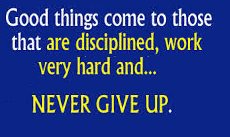
What you will be learning this year in Mathematics:
Unit One—Integers
In this unit you will be learning about integers and how to add/subtract/divide and multiply with.
| 7.1 A Comparing and ordering |
| 7.1 B Modeling use on number line |
| 7.3 A/S Times Tables |
| 7.3 A/S Powers of ten |
| 7.3 A/S All operations |
| 7.3 A/S Order of operations |
| 7.3 A/S Divisibility Tests |
| 7.3 A/S Factors |
| 7.3 A/S Absolute Value |
| 7.3 A/S Exponents |
| 7.3 B/R Rounding |
| 7.3 B/R Integers in Real Life |
Unit Two —Decimals
In this unit you will be learning about decimals and how to add/subtract/divide and multiply with. You will use dollar signs and decimal points to write money amounts.
| 7.3 A/S Place value |
| 7.3 A/S Comparing and ordering |
| 7.3 A/S All operations |
| 7.3 B/R Rounding |
| 7.3 B/R Money |
| 7.3 B/R Decimals in Real Life |
Unit Three—Fractions
In this unit you will be learning about using fractions to solve real life problems.
Write a fraction as a division problem. Write fractions as decimals. Write fractions in simplest form. Write fractions as percents.
| 7.3 A/S Comparing and ordering |
| 7.3 A/S Equivalent Fractions |
| 7.3 A/S Improper Fractions |
| 7.3 A/S Converting between each form |
| 7.3 A/S All operations with fractions |
| 7.3 B/R Fractions in Real Life |
Unit Four—Percents
In this unit you will be learning to define percents by using ratios, and using percents to solve real life problems.
| 7.3 A/S Percents |
| 7.4 D/R Three types of percent problems |
| 7.4 D/R Percent increase |
| 7.4 D/R Percent decrease |
| 7.13 B/S Everyday Use of Percentages |
| 7.13 A/S Sales tax |
| 7.13 F/S Commission |
| 7.13 E/S Simple interest |
Unit Five— Ratios and Proportions
In this unit you will use ratios to describe relationships between quantities. Here you will be comparing similar figures and coming up with ratios, proportions, and percentages.
| 7.4 D/R Proportional Relationships |
| 7.4 D/R Directly Proportional |
| 7.4 D/R Inversely Proportional |
| 7.4 D/R Ratios and rates (including unit rates) |
| 7.5 C/R Scale and scale drawing |
| 7.7 A/R Solving proportions in a problem situation |
| 7.7 A/R Ratios and Proportions in Everyday Life |
Unit Six – Patterns, Relations and Functions
In this unit you will be learning about different patterns and how they connect to each other, or do not connect.
| 7.11 A/R Arithmetic Sequences |
| 7.11 A/R Patterns and sequences |
| 7.11 A/R Matching equations and word problems |
Unit Seven —Algebra equations
This unit is a continuation of the last unit. Here you will be applying what you learned about patterns, to actually write equations using tables, graphs, and words.
| 7.10 C/S Writing equations |
| 7.7 A/R Solving Equations |
| 7.7 A/R Hands-on equations |
| 7.7 A/R Positive and negative solutions |
| 7.7 A/R Properties of Operations |
| 7.11 A/R Algebra word problems |
Unit Eight—Geometry in the plane
In this unit you will solve real world problems involving area, volume of two and three dimensional objects, composed of triangles, quadrilaterals, polygons, cubes and prisms.
| 7.5 C/R Ordered pairs and graphing |
| 7.5 C/R Graphing equations |
| 7.5 C/R Dilation, Reflection, Rotation, Translation |
| 7.5 C/R Parallels |
| 7.5 C/R Two- and three-dimensional figures |
| 7.5 C/R Polygons (Triangles, Quadrilaterals, ..) |
| 7.9 C/R Circle |
| 7.5 A/S Similar figures |
| 7.5 C/R Classifying Triangles |
| 7.5 C/R Square and square-root |
| 7.5 C/R Generating formulas |
Unit Nine—Measurement
In this unit you will be learning how to measure perimeter, area and volume. And also how to calculate volume and surface area of 3-Dimensional objects.
| 7.9 B/R Perimeter, circumference |
| 7.9 A/R Area of Parallelograms |
| 7.9 A/R Area of Triangles and Trapezoids |
| 7.9 B/R Area of Circle |
| 7.9 C/R Area of Composite Figures |
| 7.9 A/R 3D Figures |
| 7.9 A/R Volume of Prisms and Cylinders |
| 7.9 A/R Volume of Pyramids |
| 7.5 C/R Volume of Composite Figures |
| 7.9 D/S Surface Area |
Unit Ten—Probability and Statistics
In this unit you will be learning about probability and expected value. Also you will learn will learn various ways to collect and organize data.
| 7.6 H/R Sample spaces |
| 7.6 C/S Simple and independent events |
| 7.6 I/R Inferences |
| 7.12 C/R Mean, median, mode, and range |
| 7.6 G/R Graphing data |
| 7.6 G/R Choosing the appropriate graph |
| 7.6 G/R Interpreting graphs |
Unit Eleven—Personal Financial Literacy
In this unit you will be learning about how to set realistic goals, how to maximize your income, keep your spending in check
| 7.13 B/S Invest in Yourself |
| 7.13 A/S Making Decisions |
| 7.13 A/S Making Money |
| 7.13 B/S The Art of Budgeting |
| 7.13 A/S Living on your Own |
| 7.13 A/S What Can I Afford? |
| 7.13 D/S Buying a Home |
| 7.13 D/S Credit Cards |
| 7.13 D/S Cars and Loans |
Unit Twelve–After STAAR
| 7.1 A Scientific notation |
| 7.1 A Pythagorean Theorem |
| 7.1 A Solving word problems |
—–1st Six Weeks—-
—–2nd Six Weeks—-
—–3rd Six Weeks—-
—–4th Six Weeks—-
—–5th Six Weeks—-
—-6th Six Weeks—-
* The student should be prepared to turn-in the homework and other assignment(s) upon returning to school
.
—————————-

Bathroom Policy:
If you have to go to the bathroom, you must raise your hand and ask to do so. You must sign the Sign In/Sign Out notebook and get a pass before you leave the room (one boy and one girl at a time). You will not be allowed to leave the room during the first 10 minutes or last 10 minutes of a period. You will not be allowed to leave during the 1st and 6th periods.
I firmly believe that most people can be successful in school and that the amount of hard work, dedication, and sacrifice is what separates those who are successful from those who are not.
If you are absent, you want to get the assignments and notes as fast as you can. If you can, call your classmates and ask them for the assignments. If you can’t call anyone, you should ask your classmates for the work in the morning on the day that you get back.
This site is NOT meant to be a replacement for lessons taught or activities done in class.
“There are no secrets to success. It is the result of preparation, hard work, and learning from failure.” – Colin Powell
A Math Journal is a way of keeping your math work organized, so you can self-assess what you have learned. A journal entry should be written at the end of each math exercise. The math journal entries should take no more than 5 minutes.
Every journal entry becomes a record of the experience received from the specific math exercise
Daily journal prompts:
Organizing Your Math Journal
Section 1: Vocabulary /Frayer models (Vocabulary sheets for each unit)
Section 2: Notes (All of the notes you take in class)
Section 3: Homework (Homework assignments)
Section 4: Quizzes/Tests
Convert between Fractions,decimals and percents with given Fractions – F50
Convert between Fractions,decimals and percents with given Fractions – F51
Convert between Fractions,decimals and percents with given Fractions – F52
Convert between Fractions,decimals and percents with given Fractions – F53
Write each Fraction as a decimal – DE9
Write each Fraction as a decimal – DE10
Write each decimal as a percentage – PE4
Write each decimal as a percentage – PE30
Convert between Fractions,decimals and percents with given Fractions – DE29
Convert between Fractions,decimals and percents with given Fractions – DE30
Convert between Fractions,decimals and percents with given Percent – PE31
Convert between Fractions,decimals and percents with given Percent – PE32
Write each Fraction as a decimal – DE14
Knowing your personal strengths and weaknesses in math is very important.
Verify your skill level to ensure success in Math.